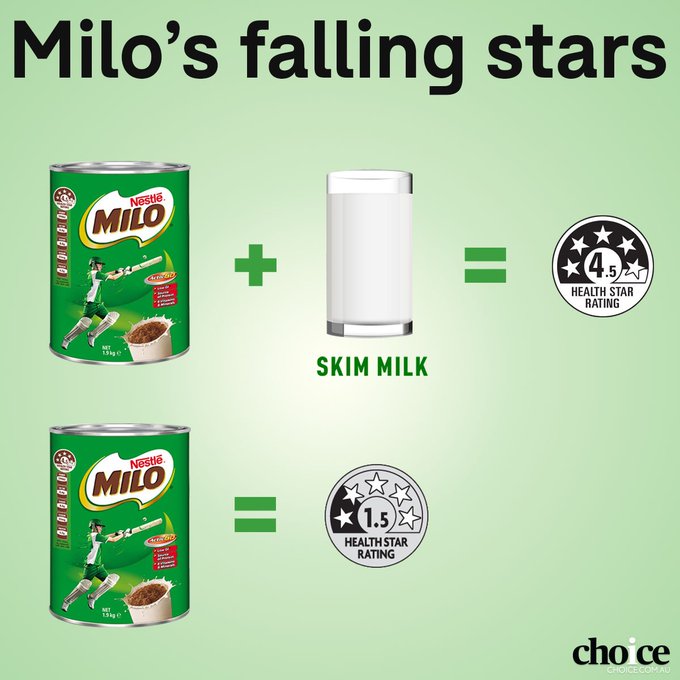MARCH 1, 2018 5:02PM
NESTLE has decided to drop Milo’s 4.5 Health Star Rating after health experts criticised the brand for “tricking” consumers into thinking Milo is healthy.
Nestle’s 4.5-star rating was based on the condition that people consume just three teaspoons of Milo with a glass of skim milk.
Public health experts and consumer group Choice have previously suggested Milo should receive a 1.5 star rating, because most people don’t actually consume Milo that way.
“Most Aussies don’t consume Milo with skim milk alone,” said Choice’s head of campaigns and policy, Katinka Day.
“To claim a health star rating by adding nutritionally superior ingredients of another product is not helpful, especially for people who eat their Milo with full cream milk, or even straight out of the can or on ice-cream,” Ms Day said.
“It’s a move that smacks of marketing trickery rather than a genuine attempt to help consumers make an informed choice.”
WIN! Following CHOICE's campaign, #Nestlé #Milo has agreed to remove their 4.5 health star rating from pack until the Government's review of the system is complete. goo.gl/JKagTj
Ms Day said the 4.5 rating should be replaced with a more accurate description of the product.
“While we welcome Nestle’s decision to ditch its dishonest star rating, it doesn’t go far enough. Milo needs to display a 1.5 star rating which reflects the product’s actual ingredients,” she said.
Nestle spokeswoman Margaret Stuart said the ratings drop only applies to the Milo powder and all other Milo-branded products will retain the 4.5 Health Star Rating.
“It’s encouraging to see a growing body of evidence showing that the HSR is delivering on its
key objectives,” Ms Stuart said in a statement.
“Crucially, it’s guiding shoppers who are comparing packaged foods within a category in store, and encouraging packaged food manufacturers to improve the nutritional content of their products, resulting in broader improvements across the food industry,” Ms Stuart said.
“The system, which was developed with the input of many stakeholders, is fundamentally sound, scientifically robust and compares well with front of pack labelling systems in other countries.”

